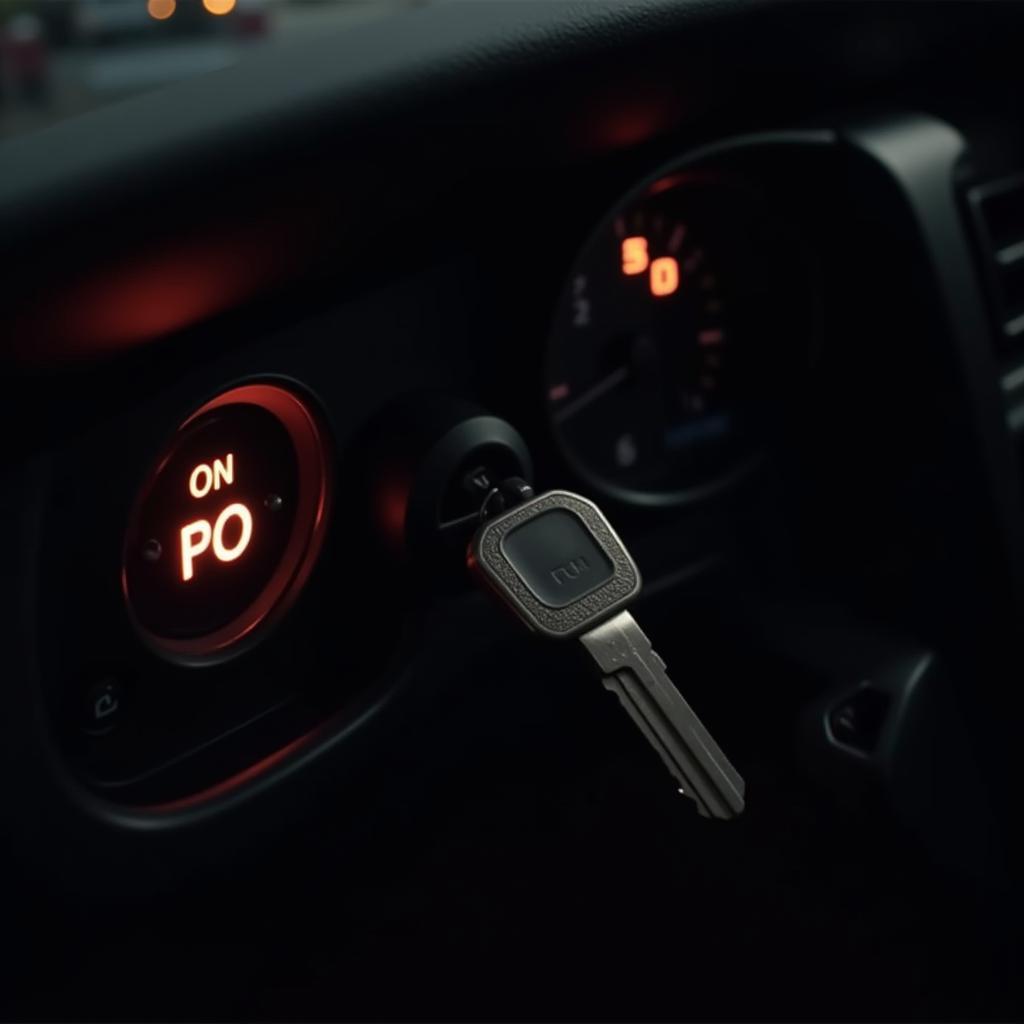A red warning light on your Seat Ibiza’s dashboard is a clear sign that something requires your immediate attention. Unlike amber lights that suggest caution, red signifies a potentially serious issue that could affect your safety or cause significant damage to your vehicle. Ignoring it is not an option! This article will help you decipher the meaning behind that red warning light and guide you towards a solution.
Understanding Your Seat Ibiza’s Warning Lights
Your Seat Ibiza uses a network of sensors and systems to keep you safe and informed about your car’s health. When a problem arises, the onboard computer triggers a corresponding warning light on the dashboard. To decipher the meaning, consult your owner’s manual – it contains a comprehensive guide to all the warning lights specific to your model year.
Common Causes of a Red Warning Light on a Seat Ibiza
While a red warning light necessitates immediate action, remember that the specific cause can vary. Here’s a breakdown of common culprits:
1. Engine Overheating
What it looks like: A thermometer icon with wavy lines or the word “TEMP”.
What it means: Your engine is getting too hot, possibly due to a coolant leak, a faulty thermostat, or a problem with the radiator fan.
What to do: Pull over safely and turn off the engine. Continuing to drive with an overheating engine can lead to severe damage. Check the coolant level (when the engine is cool) and contact a mechanic immediately.
 Seat Ibiza Engine Overheating Warning Light
Seat Ibiza Engine Overheating Warning Light
2. Brake System Warning
What it looks like: An exclamation mark within a circle or parentheses, or the word “BRAKE.”
What it means: This light signals a serious issue within your braking system. It could indicate low brake fluid, worn brake pads, or a malfunction in the ABS (Anti-lock Braking System).
What to do: Stop driving immediately. Continuing to drive with compromised brakes puts you and others at serious risk. Have your vehicle towed to a mechanic for immediate inspection and repair.
3. Oil Pressure Warning
What it looks like: An oil can icon with a drip or the word “OIL.”
What it means: Your engine oil pressure is critically low. This could be due to an oil leak, a faulty oil pump, or a clogged oil filter.
What to do: Immediately stop driving and turn off the engine. Driving with low oil pressure can cause catastrophic engine damage. Check your oil level, but even if it appears normal, do not drive the car. Have it towed to a mechanic for diagnosis and repair.
4. Battery Charge Warning
What it looks like: A battery icon.
What it means: Your car battery is not charging properly. This could be due to a faulty alternator, a loose or corroded battery cable, or a problem with the alternator belt.
What to do: While you might be able to drive for a short distance, get to a mechanic as soon as possible. Driving with a failing charging system will eventually lead to a complete loss of power.
5. Airbag Fault
What it looks like: A figure seated with an airbag deployed in front of them or the letters “SRS.”
What it means: There’s a malfunction in your airbag system, meaning the airbags might not deploy in an accident.
What to do: While this doesn’t impact driving capability, it’s crucial to address it immediately for your safety. Have the system inspected and repaired by a qualified technician.
Don’t Ignore the Warning
These are just a few common examples. For a more specific understanding of your Seat Ibiza’s warning lights, refer to your owner’s manual or use a reliable online resource like CarDiagTech.com.
How Can CarDiagTech.com Help?
Here at CarDiagTech.com, we specialize in remote vehicle diagnostics, programming, and software installation. We can help you:
- Identify the root cause: Using advanced diagnostic tools, we can remotely assess your Seat Ibiza’s fault codes and pinpoint the problem’s source.
- Provide solutions: Based on the diagnosis, we offer tailored solutions, which may include software updates, resets, or guidance on necessary repairs.
- Save time and money: Remote diagnostics can often prevent unnecessary trips to the mechanic and identify issues before they become major expenses.
Get Back on the Road Safely
A red warning light on your Seat Ibiza should never be ignored. Early diagnosis and action are crucial to prevent further damage, minimize repair costs, and most importantly, ensure your safety and the safety of others on the road.
FAQs:
1. Can I drive my Seat Ibiza with a red warning light on?
It depends on the light. Some red warning lights, like the brake system or oil pressure warnings, indicate critical problems requiring you to stop driving immediately. Others, like a low battery warning, might allow for a short drive to a safe location. However, it’s always best to consult your owner’s manual or a mechanic to determine the safest course of action.
2. What should I do if a warning light appears intermittently?
Even if a warning light is intermittent, it’s essential to have it checked by a mechanic. An intermittent light could signal a developing problem that needs attention.
3. Can CarDiagTech.com fix my Seat Ibiza remotely?
While we can’t physically fix your vehicle remotely, our remote diagnostics can identify the cause of the warning light and often resolve the issue through software updates or resets. If physical repair is needed, we can provide guidance on the necessary steps.
4. How do I schedule a remote diagnosis with CARDIAGTECH.com?
You can easily schedule a remote diagnosis through our website or by contacting our customer support team. We’ll guide you through the process and connect you with one of our expert technicians.
5. Are there any warning lights specific to certain Seat Ibiza models?
Yes, some warning lights might be model-specific. Always refer to your owner’s manual for a complete list of warning lights and their meanings for your specific Seat Ibiza model year.

